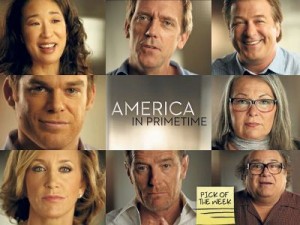
I am always a little bit wary of documentary series that purport to present a cohesive, meaningful narrative via talking heads only (save for the occasional cut away to a newspaper or magazine article, or some form of archival footage).
It’s not that I lack faith in the ability of documentary makers to find a common thread weaving through all these disparate voices; it’s more that quite a number of them fail to construct a narrative framework on which to overlay the opinions and insights they have so assiduously obtained.
Without the guiding hand of that framework, the documentary rambles on to nowhere, a gathering together of interesting snippets that fail to make a compelling whole.
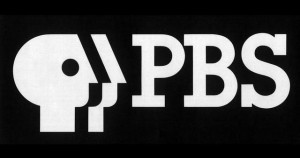
No such failings though for America in Primetime, a four part documentary series from PBS (USA’s public-funded network) featuring commentary from a host of well known TV producers and actors, that was made in 2011, but has mysteriously only found its way to Australian screens via SBS this week.
Clearly a lot of thought has gone into how to present a topic as fiendishly complex as the history of primetime television in America, and the solution chosen, to look at how the various programs featured reflected, or were products of American society at various times, is an elegant and eminently accessible approach that works well.
Commencing with a look at the way the presentation of men as fathers, husbands and breadwinners, “Man of the House” has changed significantly over time – this actually screened as the second part of the series on PBS after “The Independent Woman” which SBS will show next week – it dissects the way television both influenced, and was in turn influenced, by the great upheavals that rippled, and in some cases, ripped, through American society in the second half of the twentieth century.
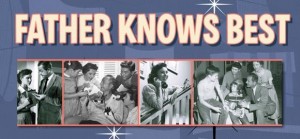
While eschewing a uniformly chronological look at the programs, in favour of a largely thematic one, it nevertheless commences with shows that defined the manly archetype while television was still in its infancy like Father Knows Best (1954-1960), and Leave it to Beaver (1957-1963).
Focusing particularly on Father Knows Best, which starred Robert Young as insurance agent, Jim Anderson, hardworking breadwinner and paragon of wisdom who ruled over his household but in the most benign of ways (this is contrasted later with Ralph Camden of The Honeymooners who preferred the tinpot tyrant approach, much to his wife Alice’s chagrin), the documentary makes it clear that men were the centre of a very ordered universe.
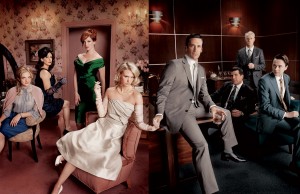
Of course, looking back we know that the world then was nowhere near as neatly laid out, nor were issues as easily resolved, as they were in these shows – AMC’s recent hit Mad Men, which takes a brutally realistic look at the lives of those who work at a 1960s advertising agency, has made this abundantly clear and is profiled later in this episode – but people loved them, and it was precisely because reality was so messy and ill-defined at the time.
Touching on this point, Shawn Ryan, creator of The Shield remarked:
“You think about what this country was going through in terms of the Cold War, in terms of the Cuban Missile Crisis. You can understand why they [TV producers] would provide comfort food.”
It was an idealised depiction of an America that probably never existed except in the domestic serenity of Norman Rockwell paintings, but it found a ready and willing audience among viewers wanting to escape the uncertainty just outside their doors.
And it was no accident that these programs arrived when they did, or that they projected the image of an untroubled world where men were men and everyone else fell comfortably in line.
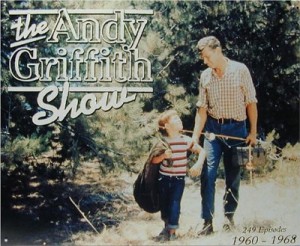
TV producers such as Andy Griffith who produced and starred in The Andy Griffith Show, knew exactly what they were doing.
As Ron Howard, who starred as Andy’s son Opie in the show, and is now a well known and greatly respected movie director said:
“Andy Griffith used to say quite openly that even though the show was set in the 1960s ostensibly, this was the small town southern America of his youth. It was already nostalgic when we were doing it.”
In this imagined golden age, men were the strong silent types who brought in the money, stood guard over their families and protected them, and knew what was best for everyone around them.
But then the world went and changed even more drastically, as the Vietnam War, and the Counter Culture movement, among other things, caused a seismic shift in American society that not even Jim Anderson could paper over.
And it forced the TV industry to produce programs that addressed the issues rather than pretended they weren’t there.
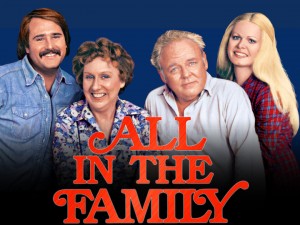
One of the first programs to portray life as it was rather than how people wished it could be was Norman Lear’s All in the Family (which was based on the British show Till Death Us Do Part), starring Carroll O’Connor as Archie Bunker who was, in the words of his creator, “afraid of progress”.
Unafraid to tackle controversial issues such as racism, sex and politics, it broke new ground in displaying American society with all its fractures and flaws, and showed, again in the words of Norman Lear, that “it’s a difficult thing being a human being”.
Gone was the sugary coating of 1960s television, with its emphasis on domestic bliss, and the man as the all knowing head of the household; in its place was a man who still cared for his family – despite his gruff exterior and unadorned bigotry, Archie Bunker loved his wife and daughter, and yes even his son-in-law, albeit grudgingly – but was uncertain what was happening to his role in the household and in society as a whole.
And the program struck a chord.
As Rob Reiner, who played Archie Bunker’s son-in-law, Michael Stivic, notes:
“There were 200 million people in America [at the time] and 45 million of them watched All in The Family, so it created this kind of national dialogue that doesn’t exist now for any TV show.”
It was this success, Lear believes, that gave him and his team the freedom to tackle the issues they did in the unvarnished way they did, and paved the way realistic depictions of life in modern America.
“The fact that the show has been successful freed us to let these people be themselves.”
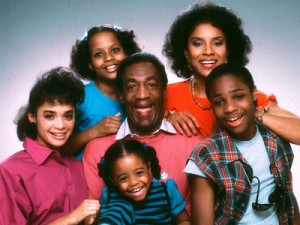
It ushered in an era where shows were unafraid to depict somewhat clueless or reactionary fathers who were uncertain of what they’re exact role was in the shadow of feminism and the great changes it had wrought in a society (which up till that time had largely confined women to the home and men to the workplace), and mothers who were exploring a life that didn’t consist of simply cooking and cleaning, and kids who felt free to question parental authority in a way that would never have been tolerated in a program like Father Knows Best.
But like any great movement, where the pendulum of change swings far in the opposite direction before swinging back to correct itself, it had to moderate itself somewhat and this came in the form of the groundbreaking program, The Cosby Show.
As Warren Littlefield, who was senior and executive vice president of the NBC network at the time The Cosby Show went to air – he developed it along with Cheers and The Golden Girls – remarked:
“Television comedies was born looking at nuclear families and yet even in the early 80s, in the few situation comedies that were about families, the dads were weak and bumbling and politically correct. Along comes Bill Cosby with a ‘Get out of my way, I have a point’ attitude.”
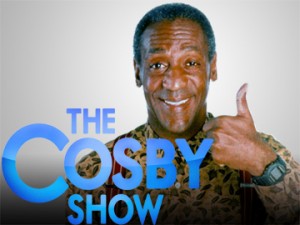
While the sitcom still possessed some of the trademarks of the age – a supremely capable wife who was every bit the equal of her husband, and sassy kids who from time to time displayed the sort of wisdom that monks in Tibet would envy, it also had what Warren Littlefield referred to as “a dad who had some balls!” in Bill Cosby’s father.
He put these kahunas to good effect in an episode with son Theo who delivers an impassioned speech claiming he is just “regular people” (in other words, a blue collar worker in the making; as opposed to his dad and mum who are a doctor and lawyer respectively) and hence shouldn’t have to study as hard.
While this receives applause from a studio audience conditioned to kids standing up to their parents, greater approval awaits Bill Cosby who tells Theo his impassioned plea is “the most ridiculous thing I have ever heard!”
The in-control, non-bumbling dad is back … and how.
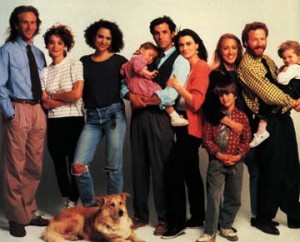
But it wasn’t only dads with discipline occupying the zeitgeist in the 1980s.
Standing alongside them, and sometimes part and parcel of the same person, was the introspective father, the sensitive soul who struggled with his new less-commanding place in the world and pondered often on the value of his manliness.
Nowhere was this new ill-at-ease masculine figure better showcased that ’80s drama, thirtysomething, where the catchcry seemed to be, in the words of series’ co-creator Marshall Hershkovitz, “It’s not really fashionable being a man these days.”
While even Marshall admits members of his own family thought the often successful characters were too whiny and inward-looking, it struck a chord with people generally, but especially with men who had everything but a sense of security about their place in the grand order of things.
It reflected, says Marshall, the overwhelming sense that men were “not living up to some standard”.
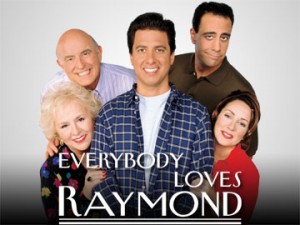
But while Bill Cosby and the angst-ridden fathers of thirtysomething gave the impression that the capable, though flawed, man was back in style, 90s sitcoms like animation classic The Simpsons, and Everybody Loves Raymond made it clear, abundantly so, that men were no longer the ones in control, nor operating within clearly defined parameters.
Unlike the 1960s shows where men were the kings of their castles, in these modern sitcoms men were bumbling, effective, and reliant on strong capable women to carry the day.
While not an entirely fair representation of men – the archetype of the child-man-dad was obviously exaggerated for comic effect – there was some truth to the idea that men were stumbling around somewhat, unsure of who they were, and weren’t, supposed to be.
And it was these mixed signals that fuelled tension between husbands and wives, both on and off screen, which were portrayed with great attention to real-life detail on Everybody Loves Raymond, something noted by star Patricia Heaton who played Debra Barone wife to the titular Raymond (Ray Raymano):
“When I would get the scripts and read them, it was crazy. They were immediately reflecting what was going on at that moment in my life, in my marriage.”
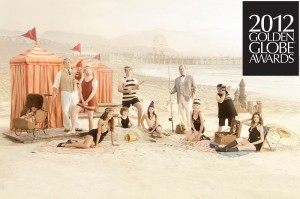
But families, like everything in life, kept evolving and growing in a period of great change for American society.
Nowhere has this been better reflected than Modern Family, which included not just any gay couple, but one who had adopted a child, reflecting the increasing number of gay and lesbian people forming families of their own.
There was no real fanfare about this.
The show’s producers simply Mitchell and Cam as just another family in a web of interconnected families and it was this normalcy that star Jesse Tyler-Ferguson, who plays Mitchell, believes is key.
“[They were] a gay couple that would read to America as they’re mom and dad.”
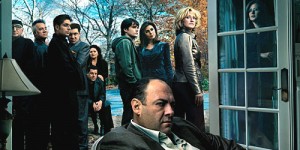
The Sopranos, which ran from 1999 to 2007, was another show that proved groundbreaking in its own way as it reflected the changing social mores of its time.
While ostensibly a show about organised crime, at its core it examined the changing role of men in modern society, yes even ones who head brutal crime syndicates, and how the uncertainty over their role affected the way they handled every aspect of their life.
Primarily, it was a show about a family man and his problems.
The fact that he was a crime boss was almost incidental.
And its major gift to television was that here finally were complex, flawed characters who didn’t always say what they really meant, just like people on real life.
Usually characters in TV shows, at least up till that time, always said exactly what they meant. But in The Sopranos, what was said was often quite the opposite of what was meant, all of which made for layered, nuanced drama.
Sure it required we pay more attention that normal but with characters as challenging and troubled as Tony Soprano, unsure to the core about who he was and whether anything he did had any merit, it was worth it.
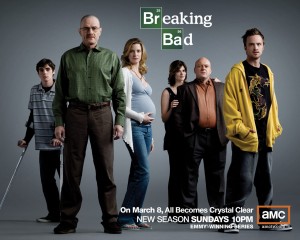
Worth taking the time to watch too is Breaking Bad, a show about a dad, Walter White (Bryan Cranston) who decides to go into manufacturing crystal meth to provide for his family when he is diagnosed with terminal cancer.
This bold decision made on the spur of the moment comes to haunt him since while it is intended to save his family, it comes perilously close to ruining it.
Still, whatever the ramifications, it gives Walter a reason to keep on going while he still lives, and as Bryan Cranston himself noted, “[feeling] fear is better than feeling nothing.”
While he is unlikely to win any Father-of-the-Year awards, Walter’s move into the drug trade was motivated by that old constant for men, even in a day and age where men are supposed to be strong and vulnerable all at once – the need for respect.
“He is not the man of respect he wishes to be” says Bryan Cranston, explaining his character’s motivations.
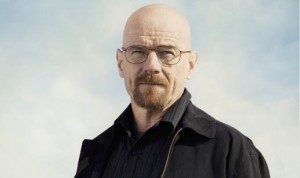
The compelling part of “Man of the House” was the way it showed quite dramatically how the role of men has changed from the in-control all-knowing dad of Father Knows Best to the deeply conflicted, flawed and frustrated father of The Sopranos and Breaking Bad in just a couple of generations, and how TV has either reflected this change, chosen to ignore it, and or gone far beyond it, querying where it might go next.
It confirmed, if nothing else, that television, especially the kind emerging in the current “golden age” of programs led HBO and AMC and the like, and which is, in the words of Ron Howard, “becoming literature … a new page in terms of what we need from a show”, is more than capable of reflecting who we are back at us, and hopefully helping us, even just a little bit, to make sense of all the changes.
* America in Primetime is airing each Tuesday night from 8.30-9.30pm on SBS, November 13 – December 4.